 A dishwasher is not as complicated a device as it might seem to many at first glance. Almost all types of breakdowns that can happen to it have elementary causes. To repair a dishwasher yourself, you do not need to have special skills or any qualifications. After the warranty expires, you can easily solve the problem yourself. Usually all models are repaired using the same methods.
A dishwasher is not as complicated a device as it might seem to many at first glance. Almost all types of breakdowns that can happen to it have elementary causes. To repair a dishwasher yourself, you do not need to have special skills or any qualifications. After the warranty expires, you can easily solve the problem yourself. Usually all models are repaired using the same methods.
Only the disassembly process differs, since dishwashers have slightly different structures, but the operating principle is always the same. In order to properly repair such equipment, it is necessary to imagine the processes occurring in it. Thanks to this, you can understand what the real problem is and quickly fix it. Many breakdowns occur due to food residues that clog machine filters, grilles and holes.But there are other reasons for breakdowns.
What to do if the dishwasher is still under warranty
Before interfering with the operation of the dishwasher, you must check whether the device is under warranty service. The vast majority of manufacturers provide a 1-year warranty, but some companies can extend the period of free service or replacement to 5 years. If it turns out that the machine breaks down during the warranty period, then it is not recommended to repair or disassemble the dishwasher yourself. You need to immediately call the store where it was purchased and find out how to deal with the problem with the help of the manufacturer.
An approximate procedure in this case looks like this:
- Writing an application for warranty repair. This can be done either in a store or at a service center. The buyer must be provided with a certain form, which he fills out himself.
- You need to find a convenient time to remove your broken washing mashine.
- When removing a dishwasher, you must draw up a transfer certificate confirming that the store is responsible for transporting and repairing the goods.
- Some also apply for a replacement product so as not to be left without a dishwasher for a long time. This is a completely legal requirement.
According to Article 20 of the Law “On the Protection of Consumer Rights”, someone whose equipment breaks down during the warranty period may demand equipment of the same class from the manufacturer for their use while the broken one is being repaired. Before contacting the manufacturer, in order not to find yourself in an awkward situation, it is better to check whether the dishwasher is connected correctly.
It happens that the equipment does not work only because the buyer did not plug the machine into an outlet or forgot to open the water supply valve.It will never be superfluous to check once again whether everything has been done according to the connection instructions if it is done independently. It is imperative to check whether the wiring is in good condition, and whether the circuit breaker in the apartment’s electrical panel is turned on. If, in the end, all the rules are followed, but the dishwasher does not work or does not work as it should, then you should use warranty service.
The main reasons why dishwashers fail
Most often, the cause of the breakdown is directly related to low power supply voltage, as well as low water supply pressure. Another reason is clogging of filters and holes. If a problem is detected in the operation of the device, then it is necessary to check the voltage, it should be 220 V, with minor deviations allowed. It is necessary to check the integrity of the cord to see if it is damaged.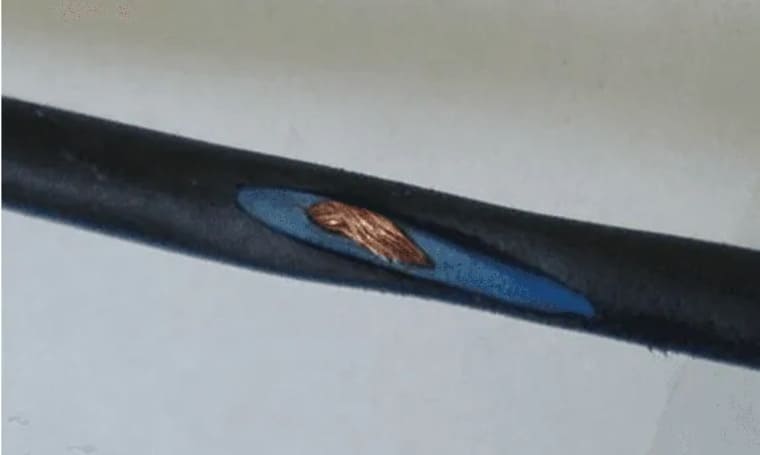
Many dishwasher breakdowns can be resolved with simple steps. Often problems are associated with low voltage in the electrical network or low pressure in the water supply. Many breakdowns are explained by the fact that filters, grilles, and openings are clogged with food debris. All these reasons can be eliminated independently, restoring functionality. You also need to make sure that the cold water supply is open. If the filter is clogged, you need to turn off the water, disconnect the water supply hose from the dishwasher, check and clean the filter, if necessary. These reasons are quite elementary, and their solution will not take much time.
Design and principle of operation of a dishwasher
The process of repairing a dishwasher yourself must be accompanied by knowledge of the basic principles of its operation.This is the only sure way to determine the causes of the breakdown and eliminate them. There is a general operating principle for a dishwasher:
- The user loads the dishes and then closes the dishwasher door. A special sensor records this action. If the lock does not close, the dishwasher will not start the washing process.
- The user selects the washing mode, and then presses the “Start” button.
- After startup, the water intake valve opens, which, in turn, must go into a special container inside the device - a reservoir. Before the water reaches this container, it is mixed with softening salts and detergent. A certain sensor monitors the water level in the machine.
- Special heating elements heat the water to the desired temperature (depending on the selected mode), which is monitored by another sensor. If the sensor is triggered, the washing process begins.
- Water heated to a certain level is supplied to nozzles located on the sides inside the machine, they, in turn, spray it in small portions. This process is called "soaking".
- All the water that drains from the dishes is collected in a tray at the bottom of the machine, then it passes through the filters and is again supplied to the nozzles.
- After the washing cycle comes to an end, rinsing of the dishes begins.
- A powerful stream of water washes away all traces of dirt and detergent from the dishes.
- At the end of the mode, dirty water begins to drain, which is pumped out of the tank by a pump.
- The dishwasher takes in some water, which rinses the tank and then goes out again.
- All the water used for washing goes down the drain.
- The drying mode begins.Each dishwasher model has its own dish drying mode. The air inside the machine heats up, then begins to accelerate inside the chamber. If there is no such mode, the dishwasher simply turns off and the dishes dry on their own.
Typical device malfunctions
If the warranty on your dishwasher has expired, there is only one way - repair using your own resources and resources. It can be disassembled, parts replaced, or a complete repair carried out, if experience allows. There is a typical list of the most common problems that every owner of this type of equipment may encounter.
Water does not heat up
The water inside the dishwasher does not heat up due to several problems: a problem with the power supply, the electric heater, the temperature control sensor or the control unit.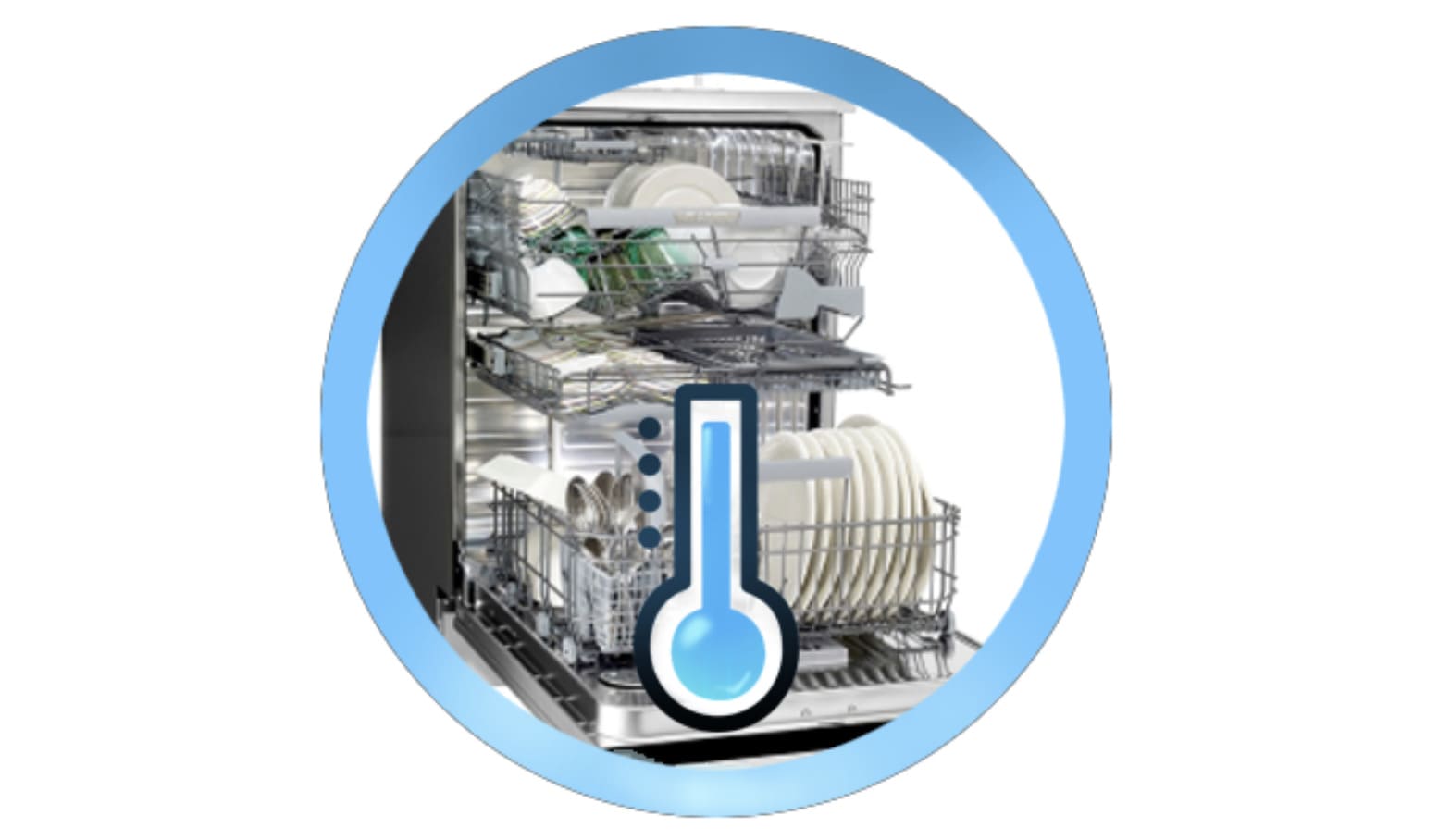
A power problem primarily indicates that the outlet or electrical cord has failed. There may have been a power surge in the network. If the reason lies in the electric heater, then most likely its main element, the metal spiral, has failed. This element may fail due to the end of its service life or poor-quality material of the product itself. The temperature control sensor is responsible for turning the electric heater on and off, which means that without its proper operation, water heating is impossible.
Intake and exhaust valve burnt out
If the valves malfunction, the dishwasher system reports a problem with an error code that can be seen on the information display of the device.After turning on the machine and selecting a program, the control module gives a signal to the valve to fill with water. If water does not enter the tank or flows continuously, the problem is in the valve.
It rarely happens that the valve becomes clogged on the water supply side; in this case, you can clean it yourself. Otherwise, it must be replaced. Replacing it is not that difficult. You need to understand where it is. The user must find the place where the inlet hose is connected to the body of the dishwasher, unplug the machine, disconnect the reservoir with the hose from the dishwasher, find the valve in the plastic box and replace it.
Extraneous noise
First you need to understand what the source of the noise is. A dishwasher is not the quietest device; it will make noise anyway. The limits of such noise range from 35 to 50 dB. Flowing water, not very audible operation of the pump - these sounds are considered normal. But if the noise level exceeds these indicators, then being near the device becomes uncomfortable. There are several reasons for extraneous noise:
- Non-technical cause of failure. The problem may be due to improper installation of the equipment. In order to check whether all installation rules are followed, you need to take a level and see how the machine stands. It must stand horizontally and be firmly fixed to the surface, which during operation will give the correct load on the entire lower surface of the dishwasher and maximum stability. If the user detects an unevenness, then with a high degree of probability there will be unpleasant noise, vibration, and the dishwasher will move in different directions.To get rid of incorrect operation and the occurrence of extraneous noise, you need to adjust the height of the legs according to the level. If you do not deal with this problem in time, then in the future the machine may become deformed and malfunctions may occur.
- Rare use of the device. If the user turns on the dishwasher infrequently, then during operation he may hear the sounds of the motor. Any equipment needs constant maintenance, which is why it is necessary to run the washing mode at least once a week, even without dishes. These actions will undoubtedly extend the life of the device. The best prevention against excessive noise is systematically cleaning the filters after each dishwashing cycle.
- Placing dishes inside the machine chamber. In order to correctly place dishes inside the dishwasher, you must read the operating instructions at the very beginning of use. When the spray arm touches the edges of dishes that are not positioned correctly inside the chamber, it can deform the rotating carousel. To all that has been said, it is worth adding that the dishes should not touch each other. Small cutlery must be well fixed so that it does not move inside the chamber during the washing process. Also, there should be no foreign objects there, as their movement can cause grinding and other extraneous sounds. Sometimes you need to check how the baskets are located; if necessary, they can be moved to a higher level.
- The technical cause of the noise may be the breakdown and wear of the bearings of the working or drain pump. Their main task is to seal the sprinkler.Bearings wear out due to frequent contact with liquid, and this leads to failure of the rubber protective seals. Most often, rapid wear of such spare parts is associated with the use of low-quality dishwashing detergents or high water hardness. In this case, it is necessary to disassemble the equipment and inspect the pump. Leaky parts must be replaced, but sometimes it is necessary to dismantle the entire pump.
- Also, strong noises often begin to bother the user due to improper operation of the recirculation pump, drive motor or pump. The pump drains the water and increases its pressure. Often it simply becomes clogged and worn out due to the large amount of debris. If the pump is broken or clogged, it constantly draws water and makes a characteristic noise. A motor fan that has become unusable hits its blades against nearby surfaces, causing an unpleasant grinding noise.
Any dishwasher makes characteristic sounds when washing dishes. Some models are quieter, others are louder, depending on the configuration and quality of sound insulation of the outer casing. If the machine is installed correctly, and the dishes are installed inside according to all the rules, then it is better to contact the service center with the problem of extraneous noise.
The machine gives an electric shock
It happens that the user touches the dishwasher (its metal parts), and he gets an electric shock. This means that an insulation breakdown has occurred in one of the parts of the device (pump, electric heater or electrical wire).
Overheating of water
The temperature regime directly depends on the operation of the electronic control unit and the electric heater operation sensor.If the water temperature exceeds the temperature of a certain washing mode, then the problem is a failure of the controllers and the program.
Leaking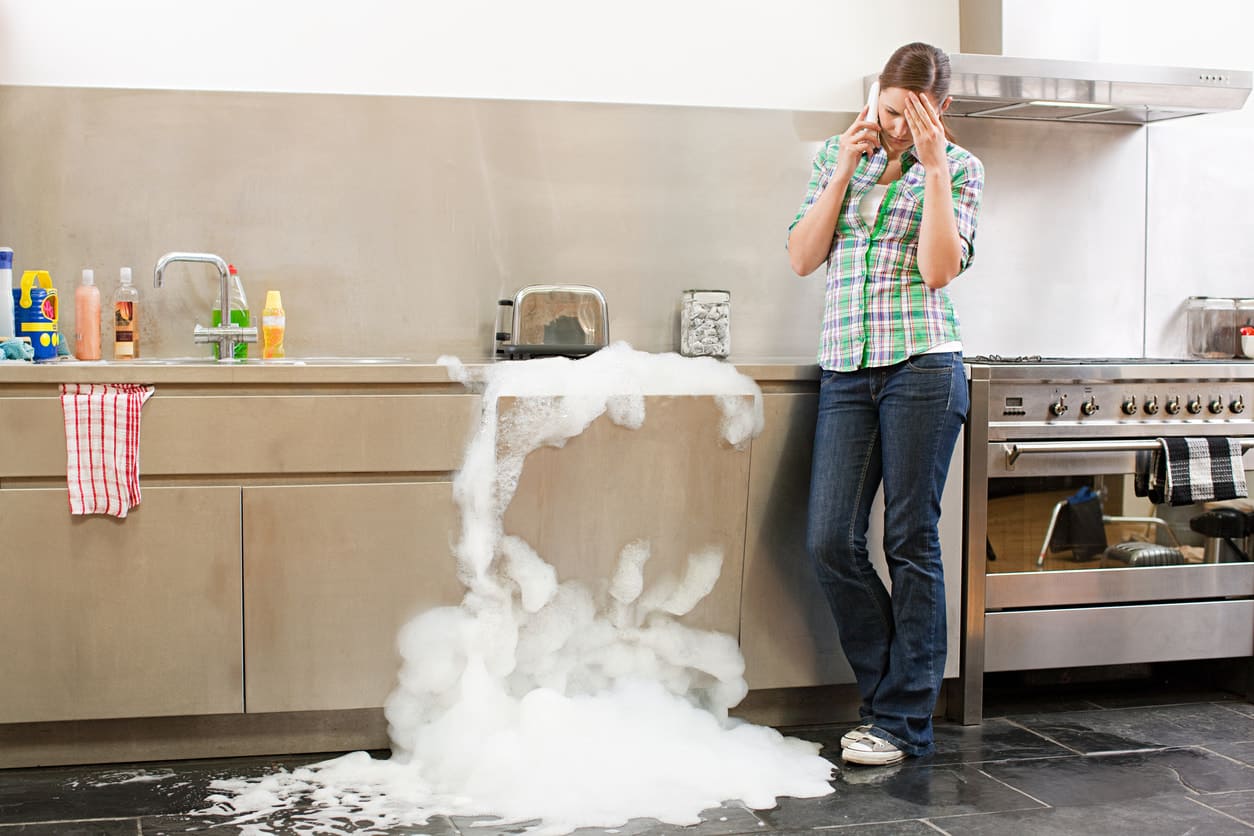
This is a fairly common dishwasher problem and can cause a flood in the room. That is why manufacturers now install a special “Aqua Stop” system in most devices, which protects the machine from leaks. When a large amount of water gets into the bottom, it raises the float, which puts pressure on the sensor. It is triggered and responds to a signal to shut off the water.
The dishwasher stops operation, and the water inlet to the device is shut off using a solenoid valve, which is built into the inlet hose. At the same time, the process of pumping water out of the dishwasher using the drain pump starts. There may be several reasons for this problem. During the initial installation of the device, it may not have been leveled, so the water begins to overflow over the edge of the tank. Poor quality detergent or its excessive use leads to increased foaming.
The water level sensor may be faulty, causing the machine to take in excess water. The seal of the door may be compromised (due to loss of elasticity of the seal or its loose fit to the body). Less common is the problem of a malfunctioning Aqua Stop system sensor or a stuck float. These problems can be easily resolved. The condition of the door and excess foam are immediately visible. Leveling the dishwasher is not that difficult. You need to eliminate the cause of the problem, remove excess water from the pan and dry the washing mashine. The dishwasher will be ready to use again.
The door won't close
Before dealing with the breakdown, you need to unplug the dishwasher from the mains. It is necessary to open the door and inspect it carefully. The most common causes of failure are deformation of the rubber seal around the perimeter of the door, incorrect installation of the dish container, misalignment of the door due to an uneven surface, and a malfunction of the mechanical lock.
Washing does not start
The light on the dishwasher is on and you can select a wash program, but the dishwasher will not start. This means you need to listen to see if the device is making any extraneous sounds. A humming sound may indicate that the pump is overloaded. But if you don’t hear any extraneous sounds, then the problem may lie in the device’s sensors - it’s better to take them out and wash them. Still, the most common reason is a malfunction of the electronic module (its flash memory). It is almost impossible to fix such a device on your own; it is better to contact a specialist.
No drainage or water intake
If the machine stops taking in water and starts making humming sounds, and the water supply is working properly, then most likely the problem lies in the pump or solenoid valve (it is either broken or its control board is faulty).
There is a triac on the solenoid valve board that is responsible for the control signal. It can be replaced with exactly the same, only serviceable element. If a large amount of water remains at the bottom of the dishwasher, then it is necessary to replace the pump, making sure in advance that the problem is not in the drain hose or filters.
The water is overflowing
One of the most annoying problems with a dishwasher is when the device stops working because the anti-leakage sensor is triggered. In most types of machines there is a bottom pan into which excess water should be drained if the hose is clogged. The pan is equipped with a special float that floats up when the pan is filled with water to the maximum level.
Thus, the float closes the network, and this leads to the dishwasher turning off. There are several reasons for this defect: the dishwasher is not level, not on a horizontal line, so the water overflows; an excessive amount of detergent leads to increased foaming, and the float mistakes the foam for water and stops the operation process; a malfunction of the water level sensor leads to the fact that too much water enters the device, which is then discharged into the lower pan; the float may be broken, and sometimes it gets stuck in the upper position; breakage and deformation of the hose; crack in the bottom of the tank.
It is better to make sure in advance that the dishwasher is equipped with a tray that will protect the device from water overflow. If there is no protective pan, then even the slightest overflow of water can lead to a large flood in the room.
Doesn't wash (doesn't wash) dishes
The main culprits of poor dishwashing are filters, nozzles or rocker arms that are clogged. To get rid of this problem, you just need to turn off the dishwasher and thoroughly clean all parts. Then you need to restart the device and turn it on again. The most difficult breakdown in this case is the failure of the circular pump, which is responsible for rotating the rocker arms.
In order to check and replace it, it is necessary to dismantle and disconnect all the tubes that are connected to it. After washing the dishes, a cloudy color and the formation of a pale coating are possible. This means that it is necessary to check the rinse aid and whether there is a regenerating salt. If the dishwasher has been in operation for quite a long time, then limescale may form on its walls - this is what gives cloudy stains on the dishes.
ECU failure
ECU is an electronic control unit. The ECU is responsible for ensuring that all operations occurring in the dishwasher are performed smoothly. Each dishwasher model has its own ECU. The cause of the breakdown is quite simple - either a voltage drop or water residue (condensate) getting on its parts. Accordingly, it is necessary to check the voltage or dry the control unit.
Stops during operation
Several reasons may be involved in this problem:
- Many modern dishwashers have an "Aqua Stop" function in their system. When water starts leaking and gets into the tray at the bottom of the device, the water drain pump turns on and the dishwasher stops working. Usually, for the convenience of the user, the machine notifies about the leak on the electronic display in the form of a code, sometimes it is clear by the blinking indicators. To restore the operation of the device, it is necessary to disconnect it from the network, remove excess water from the tray, dry all internal parts. If after turning on the machine the problem occurs again, then you need to call a technician.
- The Aqua Stop system does not always work properly. It happens that there is a failure in the operation of the system sensor, it can report a leak, although in fact there was no leak.In this case, you simply need to replace the sensor with a new one.
- The float switch inside the dishwasher may trip. Modern dishwashers have a float switch that protects the dishwasher from overfilling with water. It may not work correctly, you need to take it out and check it: remove the lower front cover of the device, get to the pan, check if the float is stuck. All this must be done manually. Sometimes you just need to knock on it, and the problem will solve itself. In case of failure, you cannot do without calling a specialist.
- If the dishwasher user is convinced that the problem lies in something else, and cannot understand what it is, then most likely the problem is a malfunction of the main control module.
Heating element diagnostics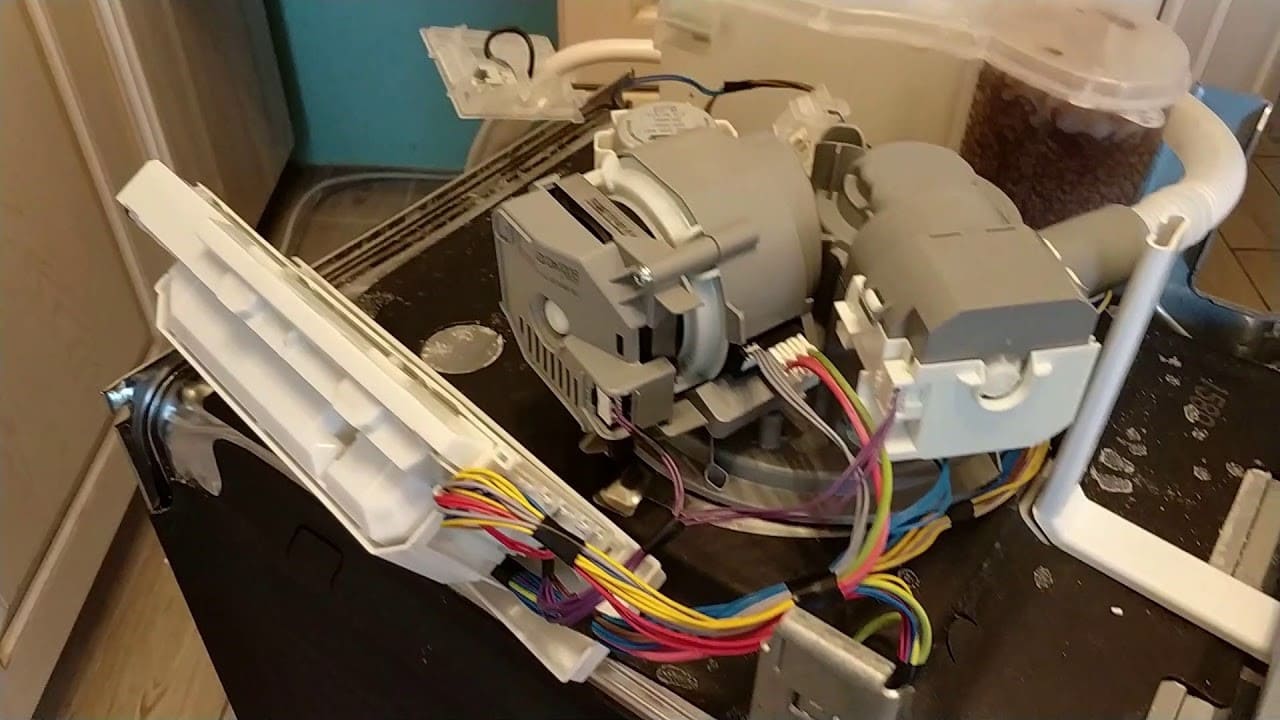
The design of the heating element (thermal electric heater) is quite simple, which means that it is possible to replace it with your own hands. Most often, this element simply burns out. To replace it, you need to prepare special tools: a new heating block, screwdrivers, pliers, an awl and a multimeter tester.
It is necessary to sequentially disconnect the machine from the network, remove all baskets and trays, remove the lower rocker, unscrew the drain filter, remove excess water, remove the circulation pump, remove the bottom panel, disconnect the bottom, remove the pump, disconnect all wires and hoses and pull out the faulty element. Then install new parts and test them in operation.
Replacing the level sensor
To replace the water level sensor, you will need to find out the exact model; they differ radically for different dishwashers.To get to the faulty part, you need to turn the washing mashine upside down, remove the bottom housing cover, find the water level sensor and dismantle it, disconnecting the remaining parts from it.
In what cases should you contact specialists?
It is recommended to contact the service center if the cause of the breakdown is not clear, immediately or after a detailed examination, if the device does not display an error code, serious malfunctions in the operation of the sensors have occurred, or the circulation or drain pumps have broken down. If the dishwasher begins to freeze frequently while washing dishes, this may indicate a manufacturing defect; it needs to be replaced at a service center. And if the device is under warranty, then it is better to take the time and contact a specialist.
Conclusion
Repairing a dishwasher often involves large expenses that are comparable to the price tag of new equipment. In this case, it would be wiser to buy a new model. The user must provide proper conditions for the operation of the machine, then it can serve for a long time and with high quality.






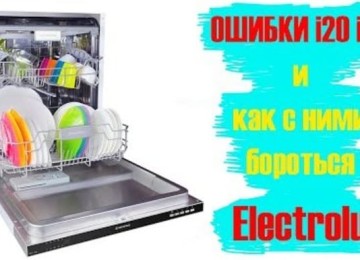
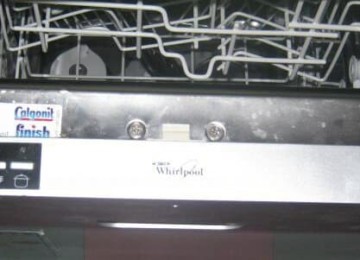
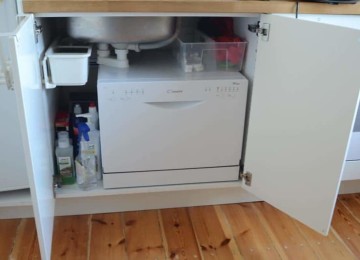
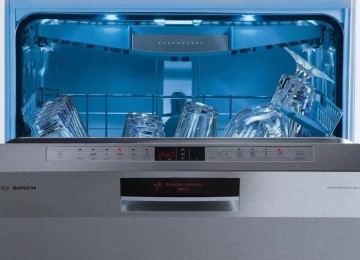
Do you know that from October 2, 2020 there will be heaven on Earth?